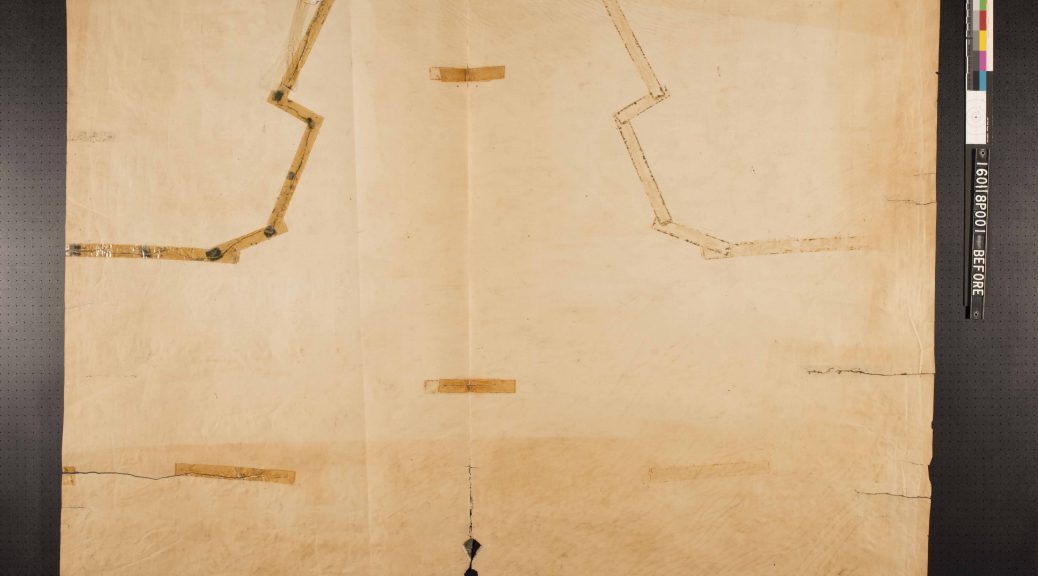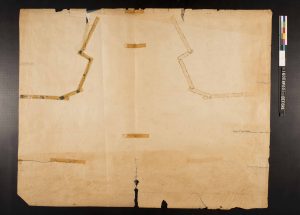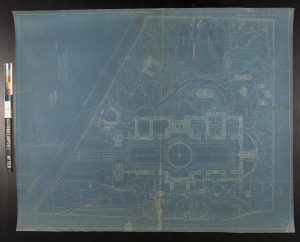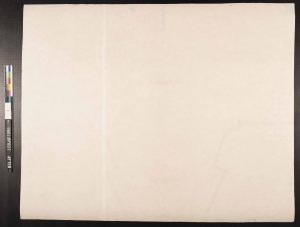By Rachel Penniman, Conservation Specialist
Back in early 2020 Henry gave a little peek into a project I was working on. When four architectural drawings of the Benjamin N. Duke House on 5th Avenue in New York City were acquired by the Rubenstein Library they were removed from their frames in order to incorporate them into the Semans family papers. After the drawings were removed from their frames the staff in the Rubenstein Library Technical Services department found they had been mounted directly onto a non-archival foam-core backing. The drawings were sent to Conservation to see if we could remove the poor quality board.

These drawings were created by a reproduction process called aniline printing which was used in the late 1800’s to the early 1900’s and is identifiable by the distinctive green background color and blueish-black lines. These prints are not on paper but on drafting cloth; a cotton or linen fiber fabric that is heavily starched and rolled to give a smooth surface. Aniline prints fade quickly with exposure to light and are sensitive to heat, humidity, alkalinity, and a number of solvents including alcohols. The starches and additives in the drafting cloth can also be very sensitive to heat and water, and the acidic process of aniline printing degrades the cloth over time making it fragile. So my toolbox of conservator tricks to remove the backings was really limited: no heat, no humidification, and few safe solvents.
I could tell there was another layer between the foam core board and the architectural drawing but it was hard to tell what was going on back there. The backing board was attached with long 2” wide strips of a very sticky, waxy adhesive. I managed to separate the board by hand, lifting it away with a thin spatula and discovered something I have never seen before.

The entire back of every drawing was covered with big sheets of cream colored, self-adhesive plastic like you might use to line your kitchen shelves. It’s commonly called contact paper, though there’s nothing paper about it. The plastic used in these products is usually polyvinyl chloride which degrades very quickly and destructively over time so it needed to be removed before it caused further damaged to the drawings. Although the adhesive on this product is weak in order to allow you to lift and reposition it during installation on a kitchen cabinet, the drafting cloth was too fragile in many places to just peel it away. I needed to find a way to more gently remove the contact paper but my options were limited. After a lot of solvent testing and experimentation I found that timed application of a small vapor chamber of solvent would soften the adhesive on the contact paper enough to gently lift it away without leaving an adhesive residue behind and without damaging the print or the drafting cloth.

Working slowly across each drawing I softened the contact paper backing and gently peeled it away to reveal lots of self-adhesive tape had also been applied directly to the back of the drawing. This object was like an onion: full of layers! Some of the tape came off along with the contact paper but the rest I removed with a small spatula and a crepe eraser. I then repaired the tears with a very thin, green toned archival paper. Whoever put the tape down was heavy handed and I often found there were no tears or damage beneath the tape at all.


This treatment was a good example of how sometimes less is more. Whoever applied hundreds of inches of tape, layers of contact paper, and huge areas of sticky adhesive to attach foam core backing board surely thought they were helping to protect a valued item. Instead they created a mess that took weeks to undo.



The best part about removing all of those layers was revealing a manufacturer’s mark printed in pale purple ink on the back that reads:
Copied by
Peerless Blue Print Company
122 East 14th
New York
Phone 168-18th
This mark helps us to date when and where these drawings were created and would have been lost if all those layers weren’t removed.

The property shown in these historic architectural drawings has recently been restored and is now on the market. The 8 bedroom, 10 bathroom, 20,000 square foot home which is directly across the street from the Metropolitan Museum of Art can be yours for just $80 million. Hopefully it’s not also held together with tape and contact paper.
https://www.zillow.com/homedetails/1009-5th-Ave-New-York-NY-10028/143156846_zpid/







